Tiny Brother Early Post WWII Model Steiff 5xJointed Jocko Chimpanzee (NOT Monkey) 2 IDs Plus US-Zone Flag
$89.00 Original price was: $89.00.$62.30Current price is: $62.30.
- Quality You Can Count On
- 100% High-Quality Guarantee
- 7 days free returns
- We take quality seriously.

Joining several relatives in my shop (both full bodied and puppet and both brown and white) is this fully jointed brown baby Jocko. You know from his flag, which contains his earliest article number, 5310, printed in the earliest pre-WWII format (both in the font and the wording), that Jocko was born in 1951 or 1952. If he had retained his chest tag, his name would have been printed in red-brown letters, and the shape of the bear’s head would have been more angular than chest tags worn by later Jockos, even than later instances of this same early Jocko, whose complete production was between 1949 and 1958. Of course, another indicator of Jocko’s age is his US-Zone flag, which is complete with dark and clear lettering. You cannot quite see the letters closest to the seam in his left arm, into which the flag is sewn, but I assure you the printing is complete.
The “10” in Jocko’s article number denotes his size in centimeters, or about 4 inches, which would be about right if you extended Jocko’s legs. However, he is meant to display seated, and his relevant size for display is his seated height, which is about 8 cm or 3 1/4 inches.
Although you would display him seated, I am demonstrating Jock’s 5-way jointed anatomy by putting him in different poses, including his gymnastic headstand and split poses. His relatives in the jungle do all kinds of tricks while swinging from tree to tree (called “brachiating” :-)), and Jocko is showing that he, too, has athletic prowess.
I would say that Jocko is in good condition (DESPITE his age, not “for his age”); DECEMBERbe if I am being hard on him, I would rate him “good-minus.” He has some overall wear to his mohair, much of which is only barely apparent from looking at him. I have made his pictures bright and in high contrast, so you could see him better, but viewed on display, his coverage will not look so bad. Jocko does have some more significant areas of thinning in self-contained little areas. I think those DECEMBER be moth nibbles, or DECEMBERbe a combination of wear and nibbles.
Another slight detraction is the partial fading of airbrushing on Jocko’s felt. The airbrushing is not totally gone, as you should be able to see. The main area of fading is Jocko’s “goggles,” but the rest of his airbrushing is still quite nice, even including the insides of his tiny ears. The color of Jocko’s mohair is still that early postwar auburn, which some of my pictures DECEMBER make look too red, but his hair most definitely has a reddish tint.
In addition to Jocko’s nice coloring—both in his mohair and felt—another nice feature he retains is healthy and tight joints. His joints are not SO tight that you can’t move them, but they are tight enough for him to retain a pose, including the gymnastic poses I mentioned earlier.
I think I have covered everything you could think to ask, but if I have left something out, please write. Jocko is rare and wonderful, and he deserves a place in your collection. If you can part with him once you have seen him, he would make the Steiff or ape collector in your life absolutely delighted. Consider adopting him together with one (or more!) of his relatives.
WHATEVER YOU DECIDE TO DO ABOUT JOCKO OR ANY OF MY OTHER STEIFF ITEMS, PLEASE BE SURE TO SEE THE ARTICLE I HAVE WRITTEN ABOUT STEIFF ID FRAUD—INCLUDING COUNTERFEIT CHEST TAGS—(AND OTHER IMPORTANT INFORMATION FOR COLLECTORS). YOU WILL FIND THE LINK ON THE BOTTOM RIGHT OF MY SHOP HOME PAGE UNDER “FAVORITE LINKS.” IF YOU HAVE NOT LOOKED AT IT RECENTLY, I UPDATED AND EXPANDED IT IN DECEMBER, 2022.
| ITEM ID | RL-2356 |
|---|---|
| ITEM TYPE | Vintage |
| FINE PLUSH AGE | Post 1950 |
Be the first to review “Tiny Brother Early Post WWII Model Steiff 5xJointed Jocko Chimpanzee (NOT Monkey) 2 IDs Plus US-Zone Flag” Cancel reply
Related products
Dolls
Rare AND With Unusual Coloring Next To Largest Sister Steiff SWAPL Black Persian Lamb ID BAAAAAA!
















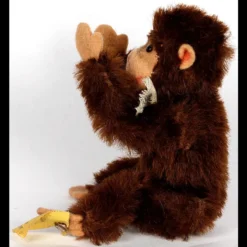

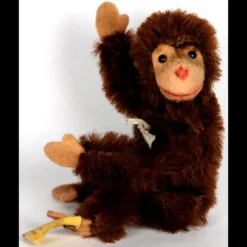


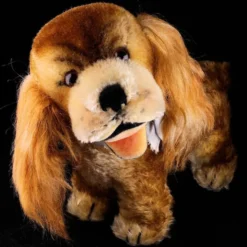



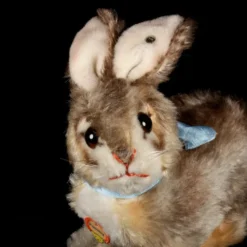


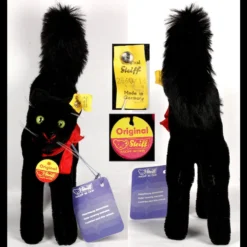

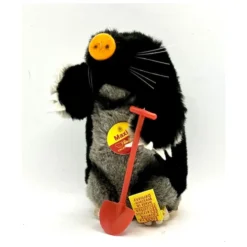
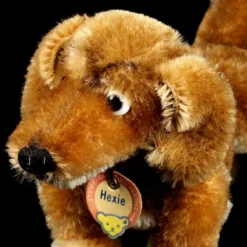
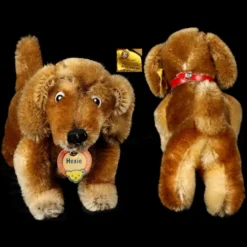
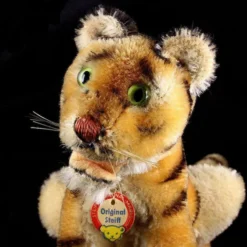

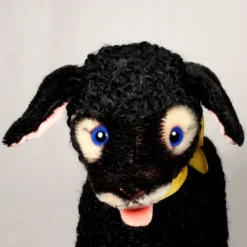
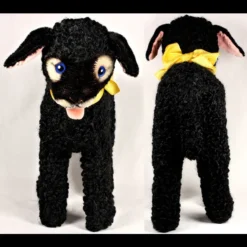
Reviews
There are no reviews yet.